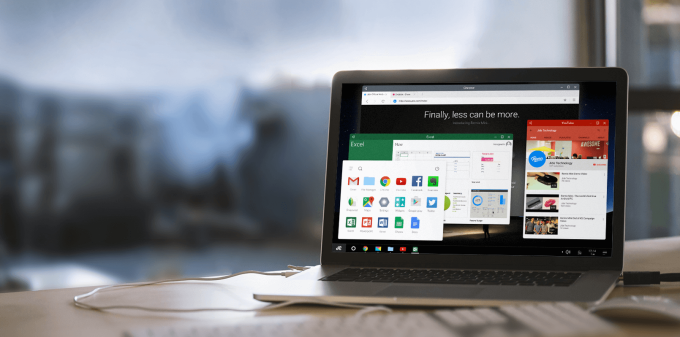Google's Android N documentation hints at 'freeform', a Windows-like desktop UI mode

Is Google preparing Android to tackle the laptop/desktop market?
Google's own Android N documentation reads:
Manufacturers of larger devices can choose to enable freeform mode, in which the user can freely resize each activity. If the manufacturer enables this feature, the device offers freeform mode in addition to split-screen mode.
While we can't tell how the Android's new freeform layout mode will look like in practice, we can imagine something similar to what Windows machines have been offering for years.
Looking no further than the Android ecosystem, Samsung has modified stock Android to support a multi-window feature since late 2014. A similar functionality is also being offered by Jide's Remix OS, a forked (highly customized) Android implementations which can be installed on most laptops and computers.
Now, the reason why this feature wasn't discovered earlier is because it's not actually available in the Android N preview. At this point, freeform is referred by the source code as an experimental mode, which might suggest that even if future Android N previews do come with freeform, the feature isn't a lock for the official Android N launch. Last year when Google launched the Android M preview, the source code mentioned an experimental split-screen mode, but the launch was obviously delayed for the next major Android iteration.
In Freeform mode, Android users will be able to freely resize activities
The Android N developer documentation instructs developers on how to support both split-screen and freeform, which are both referred to as multi-window modes. It's also important to note that developers can either support both multi-window modes or none. When a user launches an app that doesn't support the new multi-window functionality, the app will take up the whole screen.Since this feature only makes sense on larger devices, Android's new freeform mode does seem to give credence to rumors suggesting that Google's vision is to merge Android and Chrome into a single operating system.
source: Google via Ars Technica










Things that are NOT allowed: